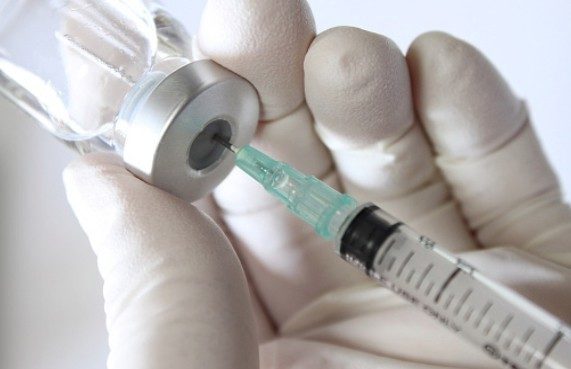Cefazolin/gentamicin versus taurolidine/citrate for prevention of CLABSI

This study aimed to compare the efficacy of LS using a combination of cefazolin and gentamicin versus taurolidine and citrate in reducing CR-BSI in patients undergoing HD and to identify any adverse effects” Bueloni et al (2019). Abstract: BACKGROUND: Catheter-related bloodstream infections (CR-BSI) is one of the various complications related to haemodialysis (HD). As a […]
Impact of prophylactic use of taurolidine-citrate lock on CLABSI in children

The aim of the study was to evaluate prophylactic use of taurolidine-citrate (T-C) solution on the number of CRIs” Małgorzata et al (2019). Abstract: Central venous access poses a risk of developing CRIs. The aim of the study was to evaluate prophylactic use of taurolidine-citrate (T-C) solution on the number of CRIs. 97 catheters, used […]
Nitroglycerin-Citrate-Ethanol catheter lock solution eradicates Candida auris biofilm

Candida auris poses emerging risks for causing severe central line associated bloodstream infections (CLABSIs). We tested in vitro, the ability of antifungal lock solutions to rapidly eradicate C. auris biofilms” Vargas-Cruz et al (2019). Abstract: Candida auris poses emerging risks for causing severe central line associated bloodstream infections (CLABSIs). We tested in vitro, the ability […]
Dermacoccus nishinomiyaensis as a cause of persistent pediatric CRBSI

This case of persistent infection subsequently resolved in response to vancomycin and urokinase lock therapy that helped to maintain the catheter” Joron et al (2019). Abstract: The authors herein report a persistent Dermacoccus nishinomiyaensis catheter- related bacteremia in a 1-year-old boy with severe Hirschsprung’s disease. D. nishinomiyaensis isolates were identified by Matrix-Assisted Laser Desorption-Ionization Time-of-Light […]
Tissue plasminogen activator vs heparin for locking central venous catheters

In this study, catheter malfunction rates using recombinant tissue plasminogen activator (rt-PA) vs heparin for locking CVC between apheresis procedures were compared” Mathur et al (2019). Abstract: BACKGROUND: Central venous catheters (CVCs) for apheresis procedures require regular locking/flushes to maintain adequate flow rates. Literature comparing locking solutions for apheresis, where the time interval between procedures […]
Ethanol lock therapy for CLABSI prevention

Ethanol lock therapy (ELT) has been reported as being effective in preventing central line-associated bloodstream infection (CLABSI)” Lopes et al (2019). Abstract: BACKGROUND: Ethanol lock therapy (ELT) has been reported as being effective in preventing central line-associated bloodstream infection (CLABSI) in tunneled (or long-term) central venous catheters (CVCs). To the best of our knowledge, no […]
Sodium bicarbonate catheter lock solution reduces hemodialysis catheter loss

The objective of this study was to determine the safety and efficacy of using sodium bicarbonate catheter lock solution (SBCLS) as a means of preventing HD catheter loss due to CRT and CRBSI” El-Hennawy et al (2019). Abstract: BACKGROUND: There is no ideal lock solution that prevents hemodialysis (HD) catheter loss due to catheter-related thrombosis […]
Tetrasodium EDTA Is effective at eradicating central venous catheter biofilm

Clinicians are searching for better ways to extend the working life span of implanted CVADs, by preventing colonization and reducing the risk of bloodstream infections” Liu et al (2018). Abstract: Central venous access devices (CVADs) are an essential component of modern health care. However, their prolonged use commonly results in microbial colonization, which carries the […]
Antibiotic lock therapy for salvage of tunneled central venous catheters

Antibiotic lock therapy (ALT) represents one such strategy to achieve such high intraluminal concentrations of antibiotics and can facilitate catheter salvage” Zanwar et al (2018). Abstract: Central Venous Catheters (CVCs) represent a significant source of infection in patients undergoing hematopoietic stem cell transplantation and can add to the cost of care, morbidity, and mortality. Organisms […]
Long-term clinical outcomes of using taurolidine as lock solution

The aim of this study was to evaluate long-term clinical outcomes of our HPN cohort while using taurolidine as lock solution. In addition, we explored risk factors associated with CVAD-related complications” Wouters et al (2018). Abstract: BACKGROUND & AIMS: Central venous access device (CVAD)-related complications, such as central-line associated bloodstream infections (CLABSIs), CVAD-related venous thromboses […]
IV catheter lock solution significantly reduced the incidence of CLABSI

Central line associated bloodstream infections(CLABSI) often result from intraluminal microbial colonization and are associated with morbidity, mortality, and substantial costs. The use of antimicrobial catheter lock solutions may reduce the incidence of CLABSI” Rijnders et al (2018). Abstract: BACKGROUND: Central line associated bloodstream infections(CLABSI) often result from intraluminal microbial colonization and are associated with morbidity, […]
Salvaging central venous catheters in home parenteral nutrition

In the past, the standard of care to treat these infections required catheter removal. More recently, several studies have indicated that many CRBSI can be treated without removal of the catheter” Bonnes et al (2018). Abstract: PURPOSE OF REVIEW: Catheter-related blood stream infections (CRBSI) pose a significant risk to patients on home parenteral nutrition (HPN). […]
IV lock solution for central venous catheter salvage

We report several cases of catheter salvage using antibiotic lock solution in staphylococcal bacteremia with the purpose of stimulating the interest in randomized clinical trials. Evaluating the risk and benefits of catheter salvage in this patient subset in light of optimized systemic antibiotic dosing, improved lock solution use, and multidisciplinary involvement, balanced with the critical […]
Recommended implantable port flush volume identified

This study investigates the best irrigation volume for an intravenous port by simulating the clinical scenario ex-vivo to access its usefulness” Wu et al (2018). Abstract: BACKGROUND: An intravenous port, which differs from a central venous catheter, has an injection chamber at the end of the catheter. This structural difference causes the irrigation flow pattern […]

